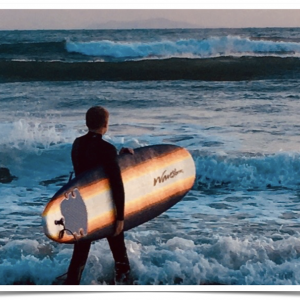Engaging English (F19 ENGL 202, Purdue) Dashboard
Description
 This class will teach you how to surf (the Internet) and about the various ways that English studies have been transformed over the last few decades. Starting with some basic close-reading and analysis skills, we will then explore how those skills have been increasingly applied to new areas of inquiry (tv, film, culture, critical theory, and politics). We will also employ new digital tools that change the way we approach our subjects of inquiry, including Web annotation, timeline-building, gallery-building and GIS mapping. As we proceed, we will consider the nature of English studies: What is an English department and how does it relate to the rest of the university? What can you do with an English degree? Why is it necessary to fight for English in an increasingly STEM-oriented world?
This class will teach you how to surf (the Internet) and about the various ways that English studies have been transformed over the last few decades. Starting with some basic close-reading and analysis skills, we will then explore how those skills have been increasingly applied to new areas of inquiry (tv, film, culture, critical theory, and politics). We will also employ new digital tools that change the way we approach our subjects of inquiry, including Web annotation, timeline-building, gallery-building and GIS mapping. As we proceed, we will consider the nature of English studies: What is an English department and how does it relate to the rest of the university? What can you do with an English degree? Why is it necessary to fight for English in an increasingly STEM-oriented world?
Galleries, Timelines, and Maps
There is no content in this group.
Individual Entries
Ferrara is a city located in northern Italy and the capitol of the Province of Ferrara. The city became of great importance during the Renaissance. It housed significant artistic names of the period, such as Andrea Mantegna, Pierro della Francesca, and Jacopo Bellini. Those artists are also known for decorating the palaces of the House of Estes, which hosted the court of the House of Estes. Ferrara was the first Renaissance city to be developed following...
moreNaples Italy is one of the largest and prominent cities in Italy, following Milan and Rome. It is located southeast of Rome and on the west coast of the Italian peninsula. This location made it ideal for trade in the 1800's. Through trade Naples established great wealth and fame throughout the world. Part of that fame is due to the Church of the Incoronata at Naples. The groundwork for the church was started in 1352 and completed in 1375. This church established many aspects of the neo-classical time period. The churches grand structure with massive columns, beautiful artwork, and symmetry display the characteristics of the neo-classical time period. The church not only served as a church for worship but also a place for collaboration and study of the arts. Artist traveled all over the work to study here, such as Alfred Stevens (1817-75) who studied works of photo renaissance in the Church of the Incoronata. These years studying in the Church of Incoronata help develop him in a...
moreThe Place de la Bastille is a square in Paris where the Bastille prison once stood until the storming of Bastille happened during the French Revolution. The area was turned into a square in 1792 and in 1833, King Louis-Philippe of the July Monarchy constructed the July Column as a monument to the July Revolution of 1830.
Joseph Johnson was one of the most prominent booksellers of his time. He helped shape the thoughts of an era by publishing the works of some of the biggest thinkers of the second half of the eighteenth century, including Joseph Priestly, scientist and theologian; Henry Fuseli, mannerist painter and writer; John Newton, sea captain and evangelical preacher; William Wordsworth; Joel Barlow, adventurer, poet, and pamphleteer; William Beckford, author of Vathek; Richard Price, mathematician and dissenting minister; and S.T Coleridge (Tyson, 1).
Not only did he support innovative writers and thinkers through his work, he also hosted them for dinner in his London home (at approximately No. 22, St. Paul’s Church Yard). These gatherings brought authors into contact with each other, and they were able to openly discuss and debate...
more